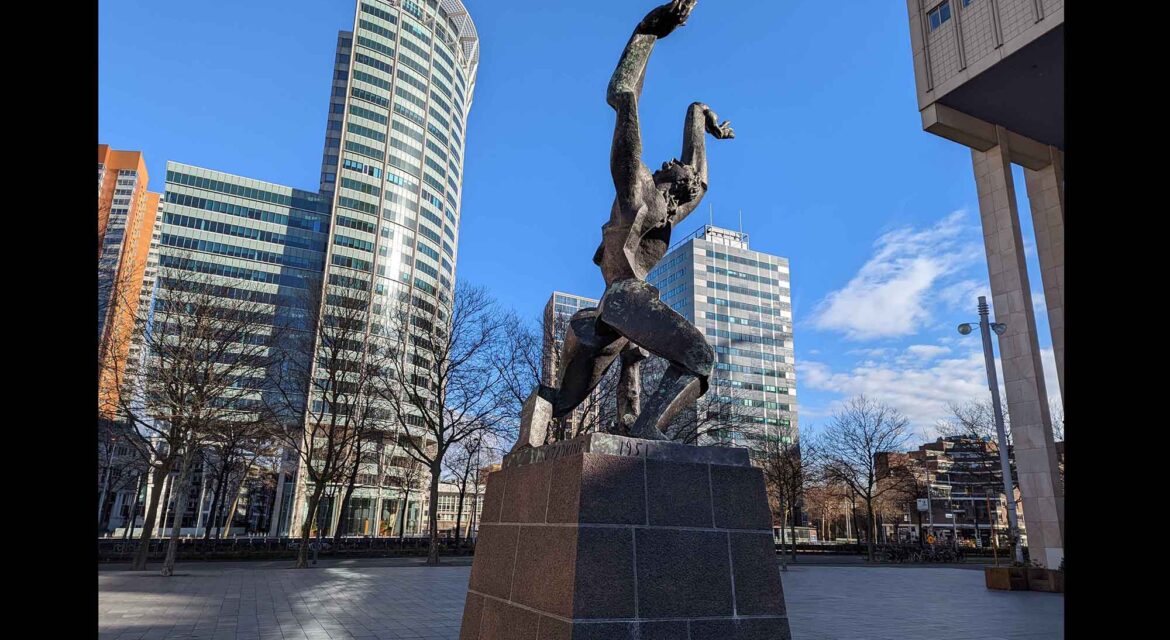 Sculptures and monuments of all types are commissioned in celebration of important events but The Destroyed City memorial alludes to an event of historic importance for the city of Rotterdam in a very different way. The piece commemorates and represents the destruction that the city suffered during World War II, highlighting how an imaginative approach to commemorating history and legacy can resonate across the eras.
Sculptures and monuments of all types are commissioned in celebration of important events but The Destroyed City memorial alludes to an event of historic importance for the city of Rotterdam in a very different way. The piece commemorates and represents the destruction that the city suffered during World War II, highlighting how an imaginative approach to commemorating history and legacy can resonate across the eras.

Preserving for Eternity the Destruction of Rotterdam
 While the Netherlands tried to remain neutral during World War II, the country’s strategic location compelled a German effort to take control of the country. As part of the invasion of the Netherlands that was intended to force the Netherlands to capitulate, the entire historic city center of Rotterdam was bombed and destroyed in 1940. This tragedy resulted in the surrender of the country. The country and city remained under occupation until 1945.
While the Netherlands tried to remain neutral during World War II, the country’s strategic location compelled a German effort to take control of the country. As part of the invasion of the Netherlands that was intended to force the Netherlands to capitulate, the entire historic city center of Rotterdam was bombed and destroyed in 1940. This tragedy resulted in the surrender of the country. The country and city remained under occupation until 1945.
When sculptor Ossip Zadkine visited Rotterdam after the war was over, much of the city remained in ruin and he saw “a city without a heart.” He created the Destroyed City sculpture to represent the physical and psychological trauma of Rotterdam.
Installed in 1953, the Destroyed City is made of bronze and is about six meters tall. The sculpture itself depicts an abstract figure with its head and arms lifted into the sky. This figure has a gaping hole in its chest and abdomen, highlighting the destroyed heart of Rotterdam as well as the desolation that was felt across the entire country. While ir was not embraced by everyone when it was first installed, the powerful design compelled it to be anonymously purchased and donated to the city.
Now installed outside the Maritime Museum Rotterdam, The Destroyed City was designated as a Dutch national monument in 2010, further underscoring how it has been able to connect with an essential legacy of Rotterdam and the entire country that audiences in the present and future can experience.
Tragedy, Inspiration and Imagination
 While some audiences focus on the agony that is inherent in The Destroyed Ciry, others see it as a manifestation of a resurgent city. For residents, the piece has become a part of the city. Compelling engagement with audiences that think and feel very differently about it, the piece showcases the imaginative breadth and scope of connection that monuments can enable.
While some audiences focus on the agony that is inherent in The Destroyed Ciry, others see it as a manifestation of a resurgent city. For residents, the piece has become a part of the city. Compelling engagement with audiences that think and feel very differently about it, the piece showcases the imaginative breadth and scope of connection that monuments can enable.


